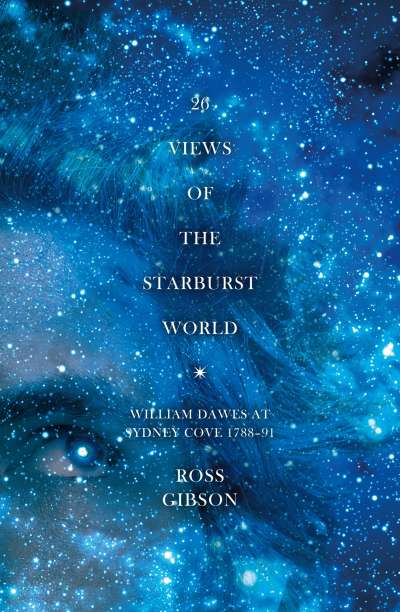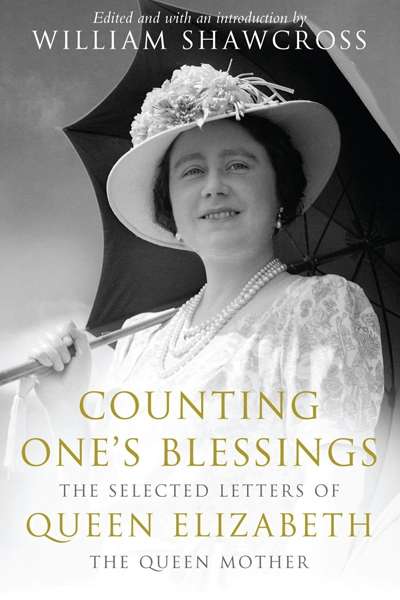History
26 Views of the Starburst World: William Dawes at Sydney Cove 1788–91 by Ross Gibson
Words matter, and there can be few more misleading ones in Australian history than ‘settlement’, as used to describe the period immediately following the arrival of the First Fleet. It connotes understanding and agreement. In Sydney Cove, by contrast, five distinct groups were present: Governor Phillip and his immediate entourage; naval vessels and their crews; a detachment of Royal Marines; a group of convicts; and the Indigenous people of the area whose home it had been for tens of thousands of years – all of them at some stage profoundly misunderstanding each other and often in major disagreement or conflict; all of them decidedly unsettled.
... (read more)Counting One’s Blessings: The Selected Letters of Queen Elizabeth the Queen Mother edited by William Shawcross
It is fitting to compare the longevity of the Queen Mother’s life with a magnificent hand-woven carpet running along a length of parquet down a torch-lit ancestral hallway: she was the embodiment of the twentieth century precisely because her life more or less spanned it. She was born on 4 August 1900 and (allowing for a bit of overhang into this century) died on Easter Saturday, 30 March 2002.
... (read more)People on Country: Vital Landscapes, Indigenous Futures edited by Jon Altman and Seán Kerins
Over the last few years, issues associated with underdevelopment in Aboriginal Australia have been widely canvassed in the mainstream press, led by the likes of Noel Pearson, Marcia Langton, and Peter Sutton. This new edited volume adopts a somewhat different approach to Aboriginal development, focusing on Indigenous involvement in natural resource management around Australia.
... (read more)The Open Door: One Hundred Poems, One Hundred Years of Poetry Magazine by Don Share and Christian Wiman
‘Reading through a hundred years of Poetry, week after week of issue after issue after issue, some forty thousand poems in all, Don and I, when we weren’t rendered prone and moaning, jolted back and forth between elation and depression.’ So Christian Wiman writes in his introduction to this elating, and never depressing, new anthology celebrating one hundred years of Poetry Magazine. Bear in mind that he and fellow editor Don Share did this while continuing with their day jobs as editors of the magazine, which receives some one hundred thousand submissions a year, and you will have some idea of the task they undertook.
... (read more)A million people thronged the streets of Barcelona on 11 September 2012, clamouring for liberty. This had been their special day long before 9/11. Like Gallipoli, it commemorates a defeat: the rout of the Catalans and their Austrian Hapsburg allies by the Bourbon monarch Philip V of Spain on 11 September 1714 in the closing stages of the War of the Spanish Succession. How could something that occurred three centuries ago get Barcelonans so worked up? It all goes back to the foundation of modern Spain through the marriage of Ferdinand of Aragon and Isabella of Castile in 1469. Forging a nation-state in an age of non-stop warfare proved a brutal business.
... (read more)Vietnam: The Complete Story of the Australian War by Bruce Davies with Gary McKay
Writing a book on a large, multifaceted, and complex historical subject on which there is a vast amount of source material is a little like sculpting a substantial yet elegant statue from marble. In this case, the sculpting process is far from complete. A potentially valuable book remains submerged within this long and inadequately edited volume. A clue to the problem lies in the subtitle, which asserts that the book is ‘the complete story of the Australian war’. There is, of course, no such thing as a complete history: even the longest multi-volume histories must decide what to exclude.
... (read more)Bradman’s War: How the 1948 Invincibles Turned the Cricket Pitch into a Battlefield by Malcolm Knox
At last, new Bradman territory to be conquered: the Don 1939–45 or, if we discount the ‘phoney war’ (‘Business as Usual’, as Robert Menzies said of that first phase in World War II), perhaps 1941–45. I imagined a slim volume. Not so! Instead, there is a catch to the subtitle of Bradman’s War: How the 1948 Invincibles Turned the Cricket Pitch into a Battlefield, which indicates that we will be on more familiar terrain.‘More familiar’ because this book is an attempt at revisionist history. Questioning the Bradman idolatry and the invincibility of the Invincibles is a suitable aim. However, the main task for the revisionist historian is to provide either fresh new evidence or a powerful reinterpretation of existing evidence as part of formulating a balanced argument: Malcolm Knox does neither.
... (read more)Canberry Tales: An Informal History by Granville Allen Mawer
I n 2013, Australians will celebrate the centenary of modern Canberra. This singular anniversary – intensely local but also emphatically national – commemorates not the actual building of the capital (that process was fraught and would not gather pace until the 1920s), but rather the optimistic laying on 12 March 1913 of three foundation stones for the grandiosely named Commencement Column on Capital Hill where the Australian Parliament, seat of our increasingly raucous national democracy, stands today. The high point of the ceremony was the naming by Lady Denman (wife of the governor-general) of Australia’s new capital as ‘Canberra’.
... (read more)Curious Minds: The Discoveries of Australian Naturalists by Peter Macinnis
Curious Minds sets out to explore the naturalists and scientists who brought Australia’s flora and fauna into the public consciousness: on the face of it a laudable aim, but one not totally fulfilled. From the title onwards the book seems confused in its aims and in its style. Is the book intended to be about people (the curious naturalists), flora and fauna (their discoveries), or both? Does it aim to provide new insights about the twenty-six selected naturalists and the culture within which they worked, or is the intent to provide a popular, even slightly scurrilous, account of the lives of selected individuals?
... (read more)London: A History in Verse edited by Mark Ford
For the poet W.S. Graham, running away from Scotland ‘with my money belt of Northern ice’ at the age of nineteen, London was the ‘golden city’ in his poem ‘The Night City’. Graham ‘found Eliot and he said yes // And sprang into a Holmes cab. / Boswell passed me in the fog / Going to visit Whistler who / Was with John Donne …’ For other poets in this anthology, London is a ‘noisome sewer’, as Cowper tells us in an extract from his long poem ‘The Task’. John Wilmot, earl of Rochester, after a night of wine and ‘grave discourse / Of who fucks who, and who does worse’, goes out into the cool of St James’s Park to find among the trees ‘nightly now beneath their shade / Are buggeries, rapes, and incests made’, and that there is a great congress of sexual activity of all walks of London life.
... (read more)










